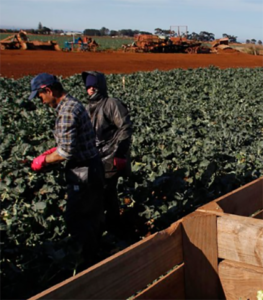Temporary migration and global people movement – opinion
In an increasingly globalised world temporary migration is a fact of life; as in the notion that people across the globe are becoming more and more mobile.
Last year the Shadow Minister for Home Affairs, Kristina Keneally lamented that “Australia’s reliance on temporary visas has created millions of migrants with no stake in the country’s future…” and that “the nation is risking a new and damaging form of social and economic exclusion”.
 But temporary entrants are not an homogenous group. They are made up of a variety of visa categories, each with different visa conditions and different lengths of stay.
But temporary entrants are not an homogenous group. They are made up of a variety of visa categories, each with different visa conditions and different lengths of stay.
Some have work rights but many do not. Some groups are growing rapidly while others are in decline.
Most are subject to massive turnover as hundreds of thousands of temporary entrants leave every year and an even larger number arrives.
It’s worth remembering that young Australians with prized skills are also in heavy demand around the world. Just under 100,000 Australian citizens leave Australia long-term or permanently every year and another 20,000 permanent residents leave long-term or permanently.
History shows that when our economy is strong, the net number of temporary entrants, as well as the net number of Australian citizens returning home, increases. When our economy is weak, the reverse happens.
In recent years we have seen some of the largest increases in people entering Australia.
The number of temporary entrants in Australia has increased from 1.605 million in December 2011 to 2.433 million in December 2019, an overall increase of over 0.8 million.
The bulk of that increase was driven by two categories – students, a group which increased from 255,000 in December 2011 to 480,000 in December 2019, and visitors, which increased from 367,000 in December 2011 to 635,000 in December 2019.
Following on from the growth in student numbers has been the growth in temporary graduates. There is a 2-4 year visa available to graduate students depending on the level of study undertaken. These visa holders have grown from 21,911 in December 2011 to 89,324 in December 2019.
The post-study work visa program is an important pathway for successful overseas students to develop skills needed either for a pathway to permanent residence or improved job opportunities in other countries.
The temporary visa that has attracted the most controversy over the last decade is the employer sponsored skilled temporary visa – the old sub-class 457 and now sub-class 482.
Despite the uproar, the number of skilled temporary visa holders in Australia has been in steady decline since its peak in 2013. Changes made in 2017-18 have meant the application rate for this visa is now in decline and as a result the overall application rate for employer sponsored permanent migration is also diminishing.
A significant number of temporary migrants go on to become permanent residents. Indeed, migration targets could not be met current levels without a feeder group of temporary entrants.
There has also been significant growth in the number of people on bridging visas – these are mostly people in Australia waiting for a decision on their visa applications or a review of a decision. The number of people on bridging visas has grown from 110,894 in December 2011 to 216,141 in December 2019.
This growth has been largely driven by a surge in asylum seekers arriving on visitor visas and a backlog in visa processing.
Another feature of the migration landscape in Australia is the rising number of temporary migrant parents in Australia and the potential impact on Australia’s health system. This new temporary visa started on 1 July 2019 and is capped at 15,000 places per annum.
But as the Senate Committee into temporary migration considers the dozens of submissions it has received, it should think about some of these issues.
Currently international students are permitted to work just 20 hours a week. This is creating a situation where many are struggling to make ends meet and driving increased welfare and mental health issues among them.
The Senate Committee should also think about ways to end exploitation and wage theft among temporary migrants; ways of expediting visa processing and ensuing there are clear and fair pathways to permanent residence for temporary entrants.
It should also look for immigration policy settings that recognise the advent of globalisation in job markets and increased human mobility; and that places Australia and Australians as net beneficiaries from increasingly rapid global people movement.












